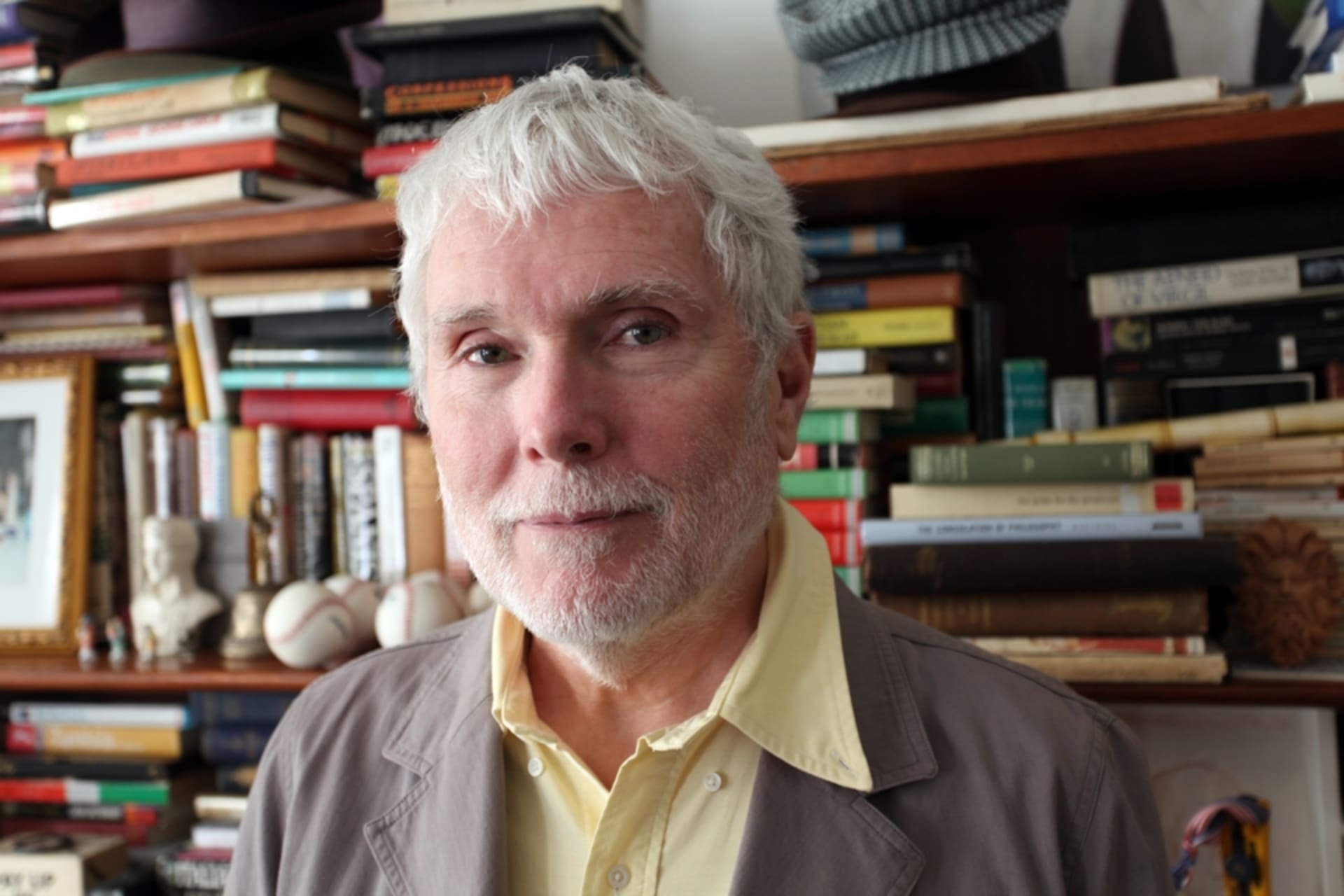
Glenn O’Brien on Kraftwerk
When I started out writing about music in the seventies, I used to get all the new releases from the major record companies. If it looked interesting, I played it and needless to say, Kraftwerk albums always looked interesting—just ask Afrika Bambaataa why he first picked up Trans-Europe Express. The first album I heard was Autobahn, and after that I was completely aware of them.
The first time I actually saw them live was in New York in the mid-seventies when Trans-Europe Express came out, and I had hung out a bit with Ralf and Florian, going to clubs or what- ever, which they really liked to do. I remember I introduced them to Dianne Brill, who back then was going out with the guy who owned Danceteria. She’s in Downtown 81 introducing Kid Creole and the Coconuts. At a time when girls were all really skinny, Diane was incredibly voluptuous. And for some reason, it seemed to me that German guys always liked volup- tuous women. Ralf and Florian were really taken by her. Not long after that, I happened to be in Cleveland visiting my parents and I saw in the newspaper that they were playing, so I went by to check out the show. At the time, I looked quite a lot like they did, with a slim fitting suit and really short hair, so I ended up getting mobbed at the show because the crowd thought I was in the band. I wrote about Kraftwerk several times and then did a really great interview with them around ’77. We talked a lot about electricity.
Kraftwerk were really international, and that moment in music and cultural history was also really international. The stuff that was going on in New York was really connected to things in London and, to a certain extent, in Paris. I didn’t know that many Germans at the time, but I was friends with Dieter Meier—although I guess he’s Swiss. For a conceptual artist, he’s pretty damn entertaining. I have to say, I don’t like it when people start saying an architect is an artist, and a fashion designer isn’t. Being an “artist” doesn’t make people any better. If Kraftwerk said they were artists, then, OK, fine—but I’m not going to impose that label on any- one. That being said, from the very beginning I considered them highly ironic, because their pose was happy, but in a totally dark way. “Radioactivity, it’s in the air for you and me,”—it’s like when I was growing up they would tell us that in the future our homes will be lit by U-235 and our cars would run on uranium; a kind of visionary futurism that was of course totally false and kind of scary. Kraftwerk always liked to play with that. I remember I asked Ralf and Florian what happens when they leave the German electrical grid—away from 50 hertz, 220 volts of alternating electrical current per second. And they were like “Oh, we don’t feel good.” I wanted to know how they felt about being in different kinds of electronic environments, because the US is 110 volts.They thought that was hilarious.
I was totally into it when they had robotic models of themselves “peforming” onstage. Everybody would get excited going to the Kraftwerk show, and then the curtain opens and it’s a bunch of mechanical simulations. At the time, it showed that the music could be played without them there, although I appreciate the controlled improvisation that they’ve done more recently. Ralf Hütter is just really smart and funny and had a really ironic sense of humor. Kraftwerk 2012 is a lot like Kraftwerk 1977, except more perfect. It’s like the difference between a 1977 Mercedes and a 2012 Mercedes. They have never stopped perfecting the old music–almost the way William Butler Yeats continued to revise his poems throughout his career. I remember when I interviewed them years ago, a really interesting exchange got edited out. I asked if their music was experimental, and I got this answer: “All music is experimental.” Think about it.~
Earlier this year we where reporting from the Kraftwerk Retrospective 1 2 3 4 5 6 7 8 at New York’s MoMa, where we collected a lot of interesting takes on the legendary techno innovators from the likes of Juan Atkins, Afrika Bambaataa, Klaus Biesenbach and more — read them here. ~ Photo: Luci Lux
–
This text appeared first in Electronic Beats Magazine N° 30 (2012). Read the full issue on issuu.com:
Published November 22, 2012. Words by Glenn O Brien.
